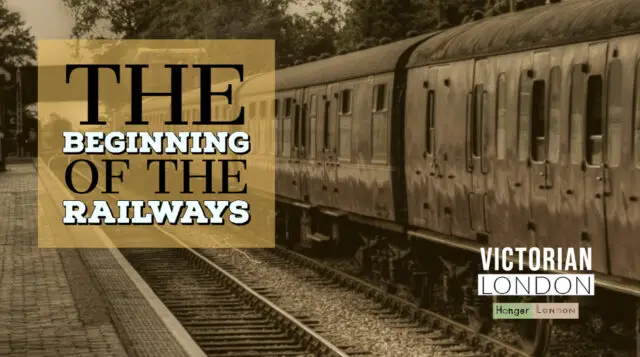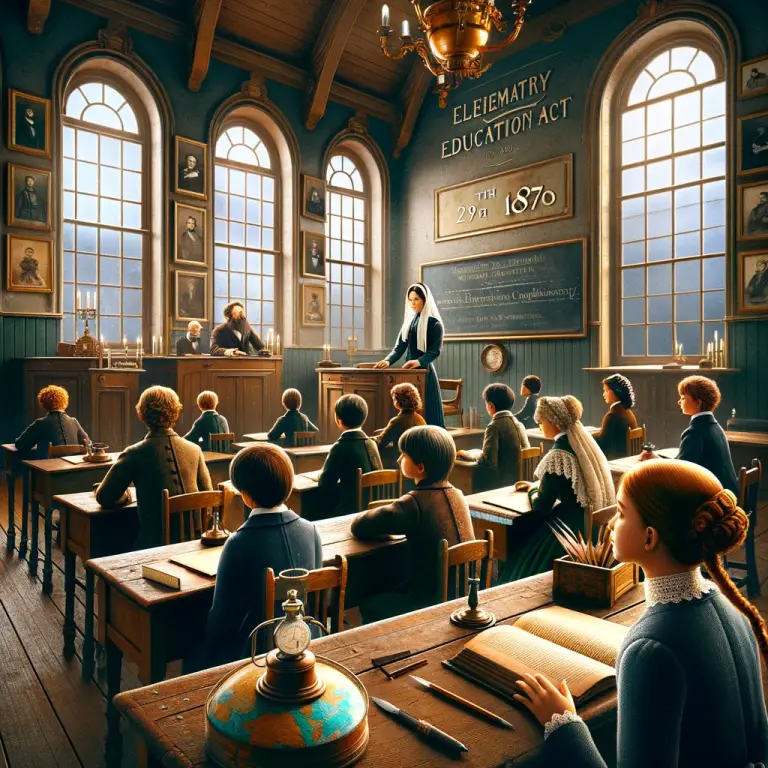London’s extensive railway network is an integral part of the city’s infrastructure, connecting millions of people every day. However, few may be aware of the long and complex history behind the development of these railways. A journey through time is necessary to understand how London’s railways came to be, tracing their origins from the earliest horse-drawn lines to the high-speed trains of today. This journey takes us through a fascinating exploration of technological advances, political maneuvers, and social changes that shaped the railways and, in turn, the city itself. From its humble beginnings to its current state as a world-renowned transportation hub, the story of London’s railways is one of constant evolution and innovation, driven by the needs and aspirations of its people.
Today if you were to look at a railway map of the British Isles, London is the place that draws in the lines from all corners of the map, making it clear this is the place for a great place to start a journey or a great place to end one. The Victorians behind so much of the industrial landscape of Britain did not disappoint in laying down the great railways of Britain. Not only did they lay down the track that we rely on today, they in part pushed the industrialised evolution of the trains, carriages, and stations too.
London and Greenwich Railway (L&GR)
The London and Greenwich Railway (L&GR) was the first steam railway to open in London between 1836-1838 for passenger services. The line opened in 1836, connecting Central London to Greenwich, a distance of around 4 miles. It was designed by George Landmann, and built by a team of engineers and labourers led by William Cubitt.
The stand-out feature of the line was that the track was in the main raised above the ground, a first of its kind, known as an elevated railway. What a site this must have been in Victorian London, both from the roads looking up and from the train looking down.
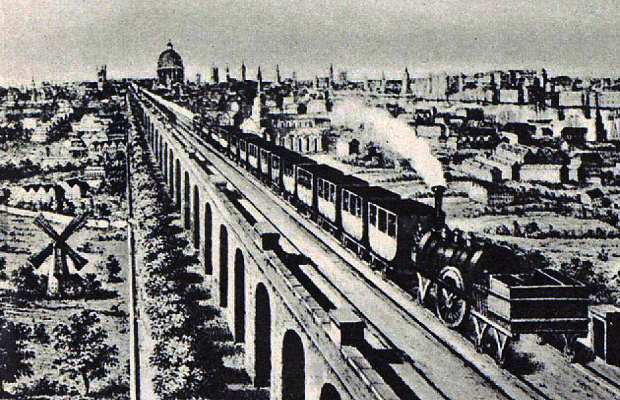
The London and Greenwich line ran from Tooley Street in the London Bridge area of London, Spa Road which is thought to be the first rail station to be built in London, opening in February 1836, the track went on to Deptford and on to the terminating station at Greenwich.
London Bridge Station also in Tooley Street opened 10 months later marking it as one of the oldest still operating stations in London.
The L&GR was an immediate success, with thousands of people using the line on its opening day, and it quickly became an important part of London’s transport network.
The L&GR played a significant role in shaping the development of London in the 19th century. Prior to the railway, Greenwich was a relatively isolated suburb of London, but with the new transport links, it became much more accessible to people from across the city. The railway also helped to spur the development of other transport infrastructure, such as roads and other railways. The success of the L&GR also led to the construction of other elevated railways in London, such as the Metropolitan Railway and the District Railway, which helped to transform the city into the metropolis we know today.
’Underneath the Arches’ – the long relationship between Rail and Small Business
Colonel Landman had the idea of using the space beneath the arches of the grand railway bridges for commercial purposes, such as renting out as workshops or shops. The idea survives today from a Porsche garage to a boxing gym can all be found under the arches towards London Bridge. The Victorians often developed these common sense solutions. Bud Flanagan wrote the well-known song “Underneath the Arches”, a song referring to the railway arches giving shelter to homeless men during the Depression of the 1930s.
London and Croydon Railway (L&CR)
The London and Croydon Railway (L&CR) was one of the first public railways in London, connecting London Bridge with the growing suburb of Croydon in 1839. The railway was designed by the famous engineer, Joseph Gibbs, and it was a significant achievement of the time, as it utilised steam-powered locomotives to transport passengers and goods between the two destinations. The railway was a catalyst for growth and development, as it encouraged urbanization and the expansion of businesses along its route.
The L&CR was initially a single-track railway, but it was later expanded to double-track, allowing more frequent and efficient services. The railway’s success led to the construction of other lines in the area, including the South Eastern Railway and the London, Brighton, and South Coast Railway. The L&CR was also a pioneer in passenger safety, as it introduced innovative features such as interlocking switches and signals, which helped to prevent collisions and derailments.
Today, the legacy of the London and Croydon Railway can still be seen in the modern transportation network of London. The L&CR was also a train operator that used London Bridge, which remains one of the busiest stations in the city, and it set the precedent for the extensive rail network that serves the capital today.
The line from London Bridge, to Croydon, was later extended to Epsom and beyond, and it was eventually absorbed into the Southern Railway in 1923.
London & Birmingham line (L&BR)
The London & Birmingham Line (L&BR) was one of the first inter-city railway lines to be built in the United Kingdom. It was completed in 1838 and connected the cities of London and Birmingham, covering a distance of 112 miles. The line was designed by Robert Stephenson, one of the most famous civil engineers of his time, and was considered a masterpiece of railway engineering. The L&BR was an important milestone in the development of the railway system in the UK, and it helped to revolutionize transport and travel in the country.
The L&BR was a major engineering project, and it involved the construction of numerous viaducts, tunnels, and bridges. The most famous of these is the 2,400-foot-long Kilsby Tunnel, which was the longest railway tunnel in the world when it was completed. The line was also notable for its use of innovative engineering techniques, such as the use of brick arches to support embankments and cuttings. The L&BR was built to a high standard, and it was one of the safest and most reliable railway lines of its time.
The L&BR played a key role in the development of the UK’s railway system. It helped to establish the railway as a viable and efficient means of transport, and it paved the way for the construction of other major railway lines throughout the country. The L&BR also had a significant impact on the social and economic development of the UK, as it enabled goods and people to be transported quickly and cheaply between London and Birmingham. Today, the L&BR is still in use, and it remains an important part of the UK’s railway infrastructure.
The ultimate train merger: LNWR and L&NWR
The London and North-western Railway (LNWR) was one of the largest and most powerful railway companies in Britain, operating from 1846 to 1923. It was formed by the merger of the London and Birmingham Railway, Grand Junction Railway, and Manchester and Birmingham Railway. The LNWR network covered a vast area, connecting London with Manchester, Liverpool, Birmingham, Glasgow, and many other major cities. The company was known for its innovation and engineering excellence, building some of the most impressive railway stations and bridges of the Victorian era.
In 1923, the LNWR merged with the Lancashire and Yorkshire Railway (L&YR), forming the London, Midland, and Scottish Railway (LMS). This was part of a larger consolidation of the British railway industry that took place in the early 20th century, aimed at increasing efficiency and reducing duplication of services. The LMS became the largest railway company in the UK, with a network stretching from London to Scotland, and employing over 100,000 people.
The merger of the LNWR and L&YR was not without controversy, as there were concerns about the dominance of the LMS in the railway industry and the potential loss of jobs. However, the LMS went on to become a highly successful and profitable company, operating until nationalization in 1948. Today, many of the former LNWR and L&YR stations and buildings are still standing, and the legacy of these pioneering railway companies can be seen throughout the UK.
Euston Station
Euston Station was expanded further during this era with a striking structure featuring an iconic arch, referred to as “The Great Hall” and was designed by Philip Charles Hardwick. The Great Hall opened in 1849.
By 1859 Euston could connect trains to Glasgow, Edinburgh, and Perth. This was a limited mail service with a few coaches for passengers. 1873 the first sleeper coach was rolled out and ran from Euston to Glasgow, again on a limited mail train for 3 nights a week. This soon increased to every night by 1874.
Sleeper Train 1874
Pause for thought there, on a Friday evening in 1874, someone’s great great great grandparents took the sleeper from London to Scotland. What a trip that must have been, rolling through the heart of Victorian Britain.
Bradshaw and the Birth of the Train TimeTable
The birth of the train timetable can be traced back to the early 19th century when the first passenger trains were introduced. Prior to the introduction of the timetable, trains were few and far between and their schedules were erratic, making it difficult for travelers to plan their journeys.
Bradshaw and the 1st Timetable
In 1830, George Bradshaw, a cartographer, and printer from Manchester published the first railway timetable. The Bradshaw’s Guide, as it was called, included a comprehensive list of train times, fares, and connections, and quickly became popular among travelers.
The introduction of the train timetable revolutionized travel in the 19th century. For the first time, travelers could plan their journeys in advance, knowing exactly when their train would depart and arrive. This made travel more convenient and reliable and helped to boost the popularity of the railways. In addition, the timetable also allowed railway companies to coordinate their services more efficiently, leading to a more streamlined and cost-effective operation.
Today, the train timetable remains an essential part of railway operations. It is used by passengers to plan their journeys, and by railway companies to manage their services. With the advent of digital technology, timetables are now available online and can be accessed from mobile devices, making travel even more convenient. Despite the advances in technology, the basic principles of the train timetable remain the same as they did in the early 19th century, and it continues to play a crucial role in the world of rail travel.
Michael Portillo TV Series & Bradshaw
Michael Portillo is a British journalist, broadcaster, and former politician who is best known for presenting a number of popular television series, including the BBC’s “Great British Railway Journeys” and “Great Continental Railway Journeys”. In these series, Portillo retraces historic railway journeys around the UK and Europe, exploring the history, culture, and landscapes of each region he visits. One of the unique features of these shows is that Portillo travels with a copy of Bradshaw’s Guide, a popular guidebook to the Victorian railways, which provides him with fascinating insights into the history of the railways and the places he visits.
Bradshaw’s Guide, first published in 1847, was a popular guidebook to the British railway system during the Victorian era. The book contained detailed information on the railway routes, timetables, and fares, as well as descriptions of the towns and landmarks along the way. It was widely used by Victorian travelers and became an iconic symbol of the railway age. Michael Portillo’s use of Bradshaw’s Guide in his television series has helped to revive interest in this historic guidebook and has provided viewers with a fascinating glimpse into the world of Victorian travel and exploration.
The Arrival of the London Underground
The London Underground, also known as the Tube, is one of the oldest and most extensive subway systems in the world. Its creation can be traced back to the mid-19th century when London was experiencing rapid population growth and traffic congestion. In 1854, Charles Pearson, a solicitor and city commissioner, proposed the idea of an underground railway to alleviate the problem. However, the idea was met with skepticism and opposition, as people were wary of the safety risks and the potential disruption to existing infrastructure.
Despite the challenges, construction on the first underground line began in 1860, and the Metropolitan Railway opened in 1863, running from Paddington to Farringdon. The success of this line led to the creation of additional lines, including the District Railway and the Inner Circle, which opened in the following years. Over the next few decades, the Tube continued to expand, with new lines being added and existing ones being extended. Today, the London Underground covers over 250 miles of track, serving 270 stations and carrying over 5 million passengers each day.
Frank Pick the visionary leader of the London Underground
Frank Pick was a visionary leader who had a significant impact on London Transport during his tenure as Managing Director of the London Underground between 1928 and 1940. Pick believed that design was fundamental to the success of public transport, and he was determined to improve the passenger experience by creating a unified and consistent identity across all of London’s transport systems. He commissioned some of the most talented designers of the time to create iconic posters, maps, and other graphics that still resonate today. Frank Pick was also responsible for commissioning some of the most celebrated Art Deco stations on the Underground, such as Arnos Grove, Southgate, and Baker Street. His legacy can still be seen in the distinctive red, white, and blue roundel, which is one of the most recognizable symbols in the world and is synonymous with London transport.
Pick’s impact on London Transport extended beyond design. He was also a pioneer in promoting the concept of public ownership and the idea that public transport was a public service, not a private enterprise. He was passionate about making public transport accessible to all and played a key role in the development of the modern public transport system. He was responsible for the introduction of many innovations, such as the use of pre-paid tickets and automatic ticket machines, and he oversaw the development of the first electric train on the Underground. Pick’s legacy is still felt today, as his ideas about public transport continue to shape policy and decision-making in the UK and around the world.
The City and South London Railway
The City and South London Railway (C&SLR) was the first deep-level underground railway in the world, and it opened in London, England, in 1890. The railway was built using the cut-and-cover method, which involved digging a trench and covering it with a roof. The C&SLR was an important development in transportation technology, as it demonstrated that it was possible to build a railway line deep below ground level without disrupting surface activity. The railway originally ran from Stockwell in South London to King William Street in the City of London, a distance of just over three miles. The line had six stations and was initially served by steam trains. In 1900, the railway was electrified, which improved the efficiency of the trains and reduced the amount of pollution produced by the railway.
The C&SLR was a significant innovation in urban transportation, and it paved the way for the development of other underground railways in London and in other cities around the world. The success of the C&SLR demonstrated the feasibility of building underground railways in densely populated urban areas, which had previously been considered impractical. The railway also helped to alleviate traffic congestion in the city and provided a faster and more convenient means of transportation for commuters. Today, the C&SLR is part of the London Underground network and is known as the Northern Line. It continues to be an important transportation artery for the city, carrying millions of passengers each year.
Victorian railway Architecture
Victorian railway architecture is characterised by its ornate and grandiose style, reflecting the prosperity and confidence of the Victorian era. The railway boom of the mid-19th century in Britain led to the construction of numerous stations and railway buildings, each designed to convey a sense of grandeur and civic pride. The arches, high ceilings, and intricate detailing of Victorian railway architecture have become iconic symbols of the era, attracting visitors and photographers alike. Many of these buildings have been repurposed over the years, with some serving as museums or event spaces, preserving the legacy of this architectural style.
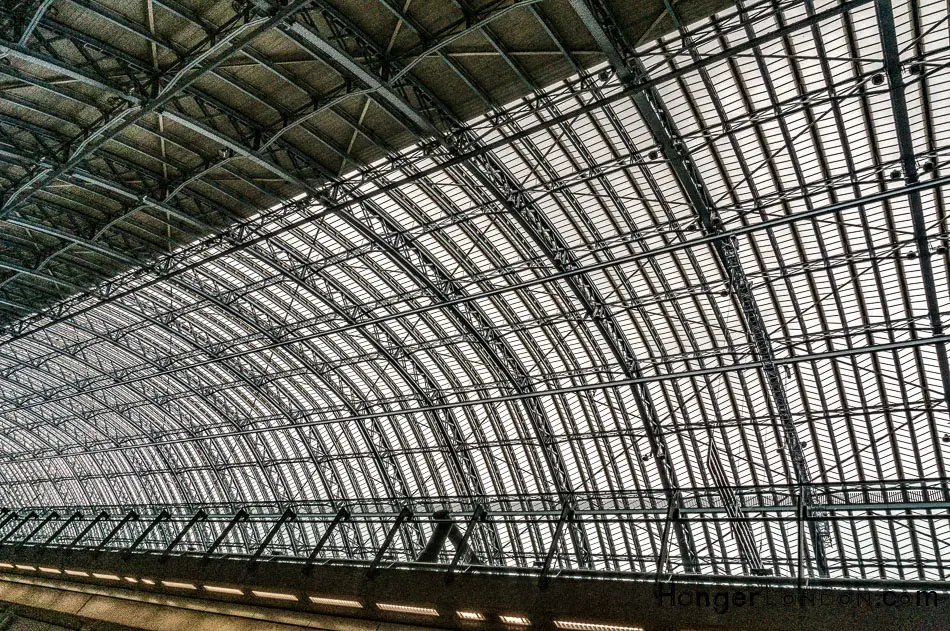
One of the most notable features of Victorian railway architecture is the extensive use of iron and glass. This allowed for vast, open spaces that could be filled with natural light, creating a sense of grandeur and luxury. The use of decorative brickwork and stone detailing was also common, with stations and buildings often featuring intricate carvings and mosaics. Despite the ornate nature of the architecture, the practicalities of railway travel were always at the forefront of design considerations, with platforms, ticket offices, and waiting areas all carefully integrated into the overall design. Overall, Victorian railway architecture remains a fascinating and important part of Britain’s architectural heritage, showcasing the power of design to create enduring symbols of an era.
7 Mainline Rail Services today
- Eurostar
- Southeastern
- Great Western Railway
- Southwestern Railway
- Stansted Express
- Gatwick Express
- Heathrow Express
16 London Mainline Stations still running today
The boom of the railways took force in England from the late 1830s and into the 1840s, so much so that in 1840 the HM railway inspectorate was set up, and the 1840 Act for Regulating Railways:
- London Bridge: Opened initially at Tooley Street 1836
- Deptford: 1836
- Spa Rd into Greenwich: 1836
- Euston: 1837
- Paddington: 1838 Expanded across from old site 1854
- Fenchurch Street: 1841
- Waterloo: 1848
- Kings Cross 1852
- Victoria 1860
- Cannon Street: 1866
- Charing Cross 1864
- St Pancras: 1866
- South Bermondsey 1866
- Liverpool St 1875
- Blackfriars 1886
- Marylebone 1899
Railway Nationalisation and British Rail
British Rail (BR) was the national railway company of the United Kingdom from 1948 until 1997. It was created by the nationalization of the “Big Four” railway companies that had dominated the industry since the early 20th century. British Rail played a significant role in the post-Victorian era of Britain, as it helped to modernize and streamline the country’s transportation infrastructure. With its vast network of tracks and trains, British Rail facilitated the movement of people and goods across the country, connecting towns and cities in a way that had never been possible before.
During the post-Victorian era, British Rail faced many challenges, including competition from new modes of transportation like cars and planes, and a lack of investment in its infrastructure. Despite these obstacles, British Rail continued to operate as the backbone of the UK’s transportation system, providing an essential service to millions of people every day. While it faced criticism for its aging trains and poor service in the later years of its existence, British Rail’s legacy remains an important part of British history, symbolising the country’s industrial and transportation development in the post-Victorian era.
BR: Rail Infrastructure, train Operator, and Train Builder
British Rail (BR) not only ran the rail infrastructure, stations, and trains, but they also became involved in train development. Possibly the most infamous train they created was the Intercity 125 (HST 125) and the train that almost eclipsed it, the APT 125 or better known to the public as the Tilting Train. British Rail also ran the Dover Cross-channel Hover Craft.
The end of British Rail in 1997 would change the ownership structure of the railways, with the restart of the great railway company names from the past and the creation of Network Rail which would own and operate the rails, and franchises that operated the trains.
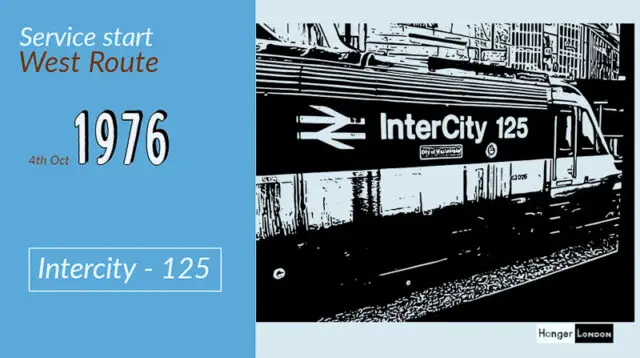
References:

